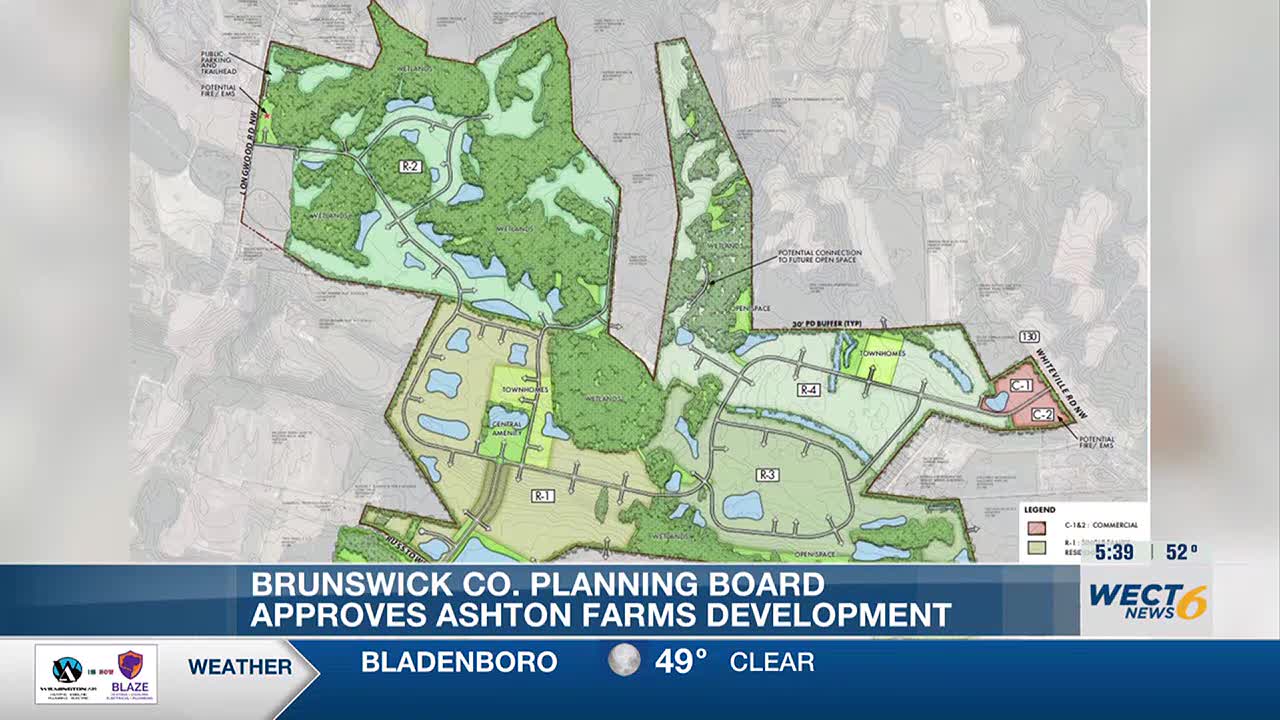Strategic Funding for Sustainable Development: The Wildlife Conservation Network Model
Aligning Conservation Finance with Sustainable Development Goals (SDGs)
The Wildlife Conservation Network (WCN) employs a strategic funding model that directly supports the achievement of several United Nations Sustainable Development Goals (SDGs). By channeling resources to community-based conservation groups, WCN’s work is integral to creating global partnerships for sustainable development.
- SDG 17 (Partnerships for the Goals): WCN acts as a critical intermediary, forging partnerships between international funders and local conservation organizations, primarily in the Global South. This facilitates the flow of capital and expertise necessary for sustainable action.
- SDG 15 (Life on Land) & SDG 14 (Life Below Water): The core mission is to protect biodiversity. By funding frontline groups, WCN directly contributes to the conservation of terrestrial ecosystems and the halting of biodiversity loss. Its support for projects like the Misool Foundation’s coral conservation in Indonesia exemplifies its commitment to protecting marine life.
- SDG 13 (Climate Action): The organization recognizes and promotes the linkage between wildlife conservation and climate change solutions, advocating that protecting natural ecosystems is a key strategy for climate mitigation and adaptation.
- SDG 10 (Reduced Inequalities) & SDG 1 (No Poverty): By empowering local and community-based organizations with financial autonomy, the model helps reduce inequalities in resource distribution and supports sustainable livelihoods tied to conservation, contributing to poverty alleviation.
Core Strategy: Unrestricted Funding for Localized Impact
A central tenet of the WCN approach, as articulated by CEO Jean-Gaël Collomb, is the advocacy for unrestricted funding. This strategy is designed to empower local experts and maximize conservation effectiveness, aligning with principles of local ownership and sustainable management.
- Local Expertise: It is based on the rationale that community-based organizations possess the most intimate knowledge of their local ecosystems and the specific challenges they face.
- Flexibility and Agility: Unrestricted funds provide local groups with the flexibility to allocate resources where they are most needed, allowing for adaptive management in response to changing conditions.
- Empowerment: This funding model empowers frontline conservationists, granting them the autonomy to implement solutions they deem most effective for achieving conservation and development outcomes.
- Building Trust: While co-designing projects with funders is sometimes necessary, the long-term goal is to build relationships based on trust, allowing for greater autonomy and impact.
Mechanisms for Building Trust and Facilitating Partnerships
To bridge the gap between funders and frontline conservationists, WCN has developed specific mechanisms to foster transparency, build trust, and ensure the effective deployment of capital in line with SDG 17.
- Field Visits for Funders: WCN facilitates trips for donors to visit project sites. These visits allow funders to see the direct impact of their investment, fostering a deeper understanding and a stronger commitment to the cause.
- Annual Wildlife Conservation Expo: This event brings local conservation leaders to the United States, providing a direct platform for them to engage with funders, share their work, and build crucial relationships for long-term financial support.
- Direct Engagement: By creating opportunities for direct interaction, WCN helps overcome the challenge of obscurity that many local organizations face, enabling them to secure vital support.
Addressing Systemic Challenges in Conservation Funding
The report identifies significant structural challenges within the international funding landscape that can impede progress toward the SDGs. These challenges often prevent resources from reaching the areas where they can have the most impact.
- Inefficient Fund Flows: A primary issue is the slow disbursement of funds from large foundations and intergovernmental bodies, with money often being delayed or diminished as it passes through multiple administrative layers.
- Visibility of Local Organizations: Many highly effective, community-based conservation groups lack the international visibility required to attract investment from major funders.
Recommendations for Enhancing Funding Efficacy
To overcome these barriers and accelerate progress on conservation and sustainable development, the following recommendations are put forth for funding organizations.
- Streamline Funding Channels: Develop creative and efficient mechanisms to expedite the transfer of money directly to frontline organizations.
- Maximize Ground-Level Impact: Reduce the number of intermediary layers in the funding chain to ensure a higher percentage of financial support reaches the intended conservation projects.
- Invest in Due Diligence: Funders should dedicate resources to identifying and vetting lesser-known local organizations that are delivering significant conservation results.
- Leverage Strategic Partners: Collaborate with networks like WCN that specialize in identifying, vetting, and building the capacity of local conservation groups, thereby de-risking investment and amplifying impact.
1. Which SDGs are addressed or connected to the issues highlighted in the article?
-
SDG 13: Climate Action
The article connects wildlife conservation directly to climate solutions, referencing a commentary co-authored by WCN’s CEO which states, “wildlife conservation is a key climate change solution.” This positions the conservation efforts described as a strategy for climate action.
-
SDG 14: Life Below Water
The article explicitly mentions WCN’s support for marine conservation. The banner image caption notes that WCN is “supporting the coral conservation work of the Misool Foundation” in Raja Ampat, Indonesia, directly addressing the protection of marine ecosystems.
-
SDG 15: Life on Land
The primary focus of the article is on “wildlife conservation” and supporting “community-based conservation groups” on the “frontlines.” This directly relates to protecting terrestrial ecosystems and biodiversity, which is the core of SDG 15.
-
SDG 17: Partnerships for the Goals
This is the most central SDG in the article. The entire mission of the Wildlife Conservation Network (WCN) is to act as an intermediary, creating partnerships by linking “funders with community-based conservation groups.” The article details the mechanics of this partnership, including mobilizing financial resources, building trust, and facilitating “direct engagement” between international funders and local organizations.
2. What specific targets under those SDGs can be identified based on the article’s content?
-
SDG 13: Climate Action
- Target 13.3: Improve education, awareness-raising and human and institutional capacity on climate change mitigation, adaptation, impact reduction and early warning.
By funding and empowering local conservation groups who “know the environment best,” WCN enhances the institutional and human capacity for on-the-ground climate mitigation through nature-based solutions like wildlife and habitat conservation.
- Target 13.3: Improve education, awareness-raising and human and institutional capacity on climate change mitigation, adaptation, impact reduction and early warning.
-
SDG 14: Life Below Water
- Target 14.2: By 2020, sustainably manage and protect marine and coastal ecosystems to avoid significant adverse impacts, including by strengthening their resilience, and take action for their restoration in order to achieve healthy and productive oceans.
The support for “coral conservation work” in Indonesia is a direct action aimed at protecting and restoring a critical marine and coastal ecosystem.
- Target 14.2: By 2020, sustainably manage and protect marine and coastal ecosystems to avoid significant adverse impacts, including by strengthening their resilience, and take action for their restoration in order to achieve healthy and productive oceans.
-
SDG 15: Life on Land
- Target 15.5: Take urgent and significant action to reduce the degradation of natural habitats, halt the loss of biodiversity and, by 2020, protect and prevent the extinction of threatened species.
WCN’s work of channeling funds to “frontline” conservationists is a direct contribution to this target by enabling actions that protect wildlife and their habitats.
- Target 15.c: Enhance global support for efforts to combat poaching and trafficking of protected species, including by increasing the capacity of local communities to pursue sustainable livelihood opportunities.
By advocating for more funding and empowerment for “local conservation organization[s],” WCN helps increase the capacity of these communities to protect their local wildlife.
- Target 15.5: Take urgent and significant action to reduce the degradation of natural habitats, halt the loss of biodiversity and, by 2020, protect and prevent the extinction of threatened species.
-
SDG 17: Partnerships for the Goals
- Target 17.3: Mobilize additional financial resources for developing countries from multiple sources.
The article describes WCN as a “venture capital firm for conservation” that helps “community-based groups from the Global South access funding from international organizations,” which is a clear example of mobilizing financial resources from multiple sources.
- Target 17.16: Enhance the global partnership for sustainable development, complemented by multi-stakeholder partnerships that mobilize and share knowledge, expertise, technology and financial resources.
WCN’s entire operational model embodies this target. It is a multi-stakeholder partnership that mobilizes financial resources and facilitates knowledge sharing by connecting funders directly with local experts.
- Target 17.17: Encourage and promote effective public, public-private and civil society partnerships, building on the experience and resourcing strategies of partnerships.
The article highlights the partnership between WCN (a civil society organization), funders (private foundations, etc.), and “local nonprofits” (civil society organizations), showcasing an effective civil society partnership model.
- Target 17.3: Mobilize additional financial resources for developing countries from multiple sources.
3. Are there any indicators mentioned or implied in the article that can be used to measure progress towards the identified targets?
-
For Targets 14.2 and 15.5:
- Indicator: The existence and funding of specific conservation projects.
The article provides a concrete example: the “coral conservation work of the Misool Foundation” supported by WCN. The number and scale of such supported projects can serve as an indicator of progress.
- Indicator: The existence and funding of specific conservation projects.
-
For Target 17.3:
- Indicator: The amount and type of funding mobilized for local groups.
The article emphasizes the importance of “unrestricted funding.” Therefore, progress could be measured by the total dollar amount mobilized and, more specifically, the percentage of that funding that is unrestricted, allowing local groups “more flexibility.”
- Indicator: The efficiency of financial resource flows.
The article mentions the challenge of money “being held up in different layers.” A key indicator of progress would be a reduction in this inefficiency, measured by the “percentage [of funding that] hit[s] the ground.”
- Indicator: The amount and type of funding mobilized for local groups.
-
For Targets 17.16 and 17.17:
- Indicator: The number and quality of partnerships formed.
The article mentions the “Wildlife Conservation Expo” as a mechanism for building relationships. The number of new partnerships formed between funders and local conservationists at such events is a measurable indicator. The quality of these partnerships is implied through the building of “trust” and “direct engagement.”
- Indicator: Access to funding for lesser-known organizations.
The article notes that many great local organizations are “not well known,” making it hard to get funding. An indicator of WCN’s success would be the number of such organizations that receive funding through their facilitation.
- Indicator: The number and quality of partnerships formed.
4. SDGs, Targets and Indicators Table
| SDGs | Targets | Indicators |
|---|---|---|
| SDG 13: Climate Action | 13.3: Improve education, awareness-raising and human and institutional capacity on climate change mitigation. | Increased capacity of local groups to implement conservation as a “key climate change solution.” |
| SDG 14: Life Below Water | 14.2: Sustainably manage and protect marine and coastal ecosystems. | Number of marine conservation projects supported (e.g., “coral conservation work”). |
| SDG 15: Life on Land | 15.5: Halt biodiversity loss and protect threatened species. | Number of frontline wildlife conservation groups receiving funding and support. |
| 15.c: Enhance global support and capacity of local communities to combat poaching and trafficking. | Increased financial empowerment of “local conservation organization[s].” | |
| SDG 17: Partnerships for the Goals | 17.3: Mobilize additional financial resources for developing countries. | Amount of funding mobilized; Percentage of funding that is “unrestricted”; Percentage of funding that reaches the “frontlines.” |
| 17.16: Enhance the global partnership for sustainable development. | Number of partnerships created between funders and local groups (e.g., via the “Wildlife Conservation Expo”). | |
| 17.17: Encourage and promote effective civil society partnerships. | Level of “direct engagement” and “trust” built between partners; Number of “not well known” organizations that secure funding. |
Source: news.mongabay.com







